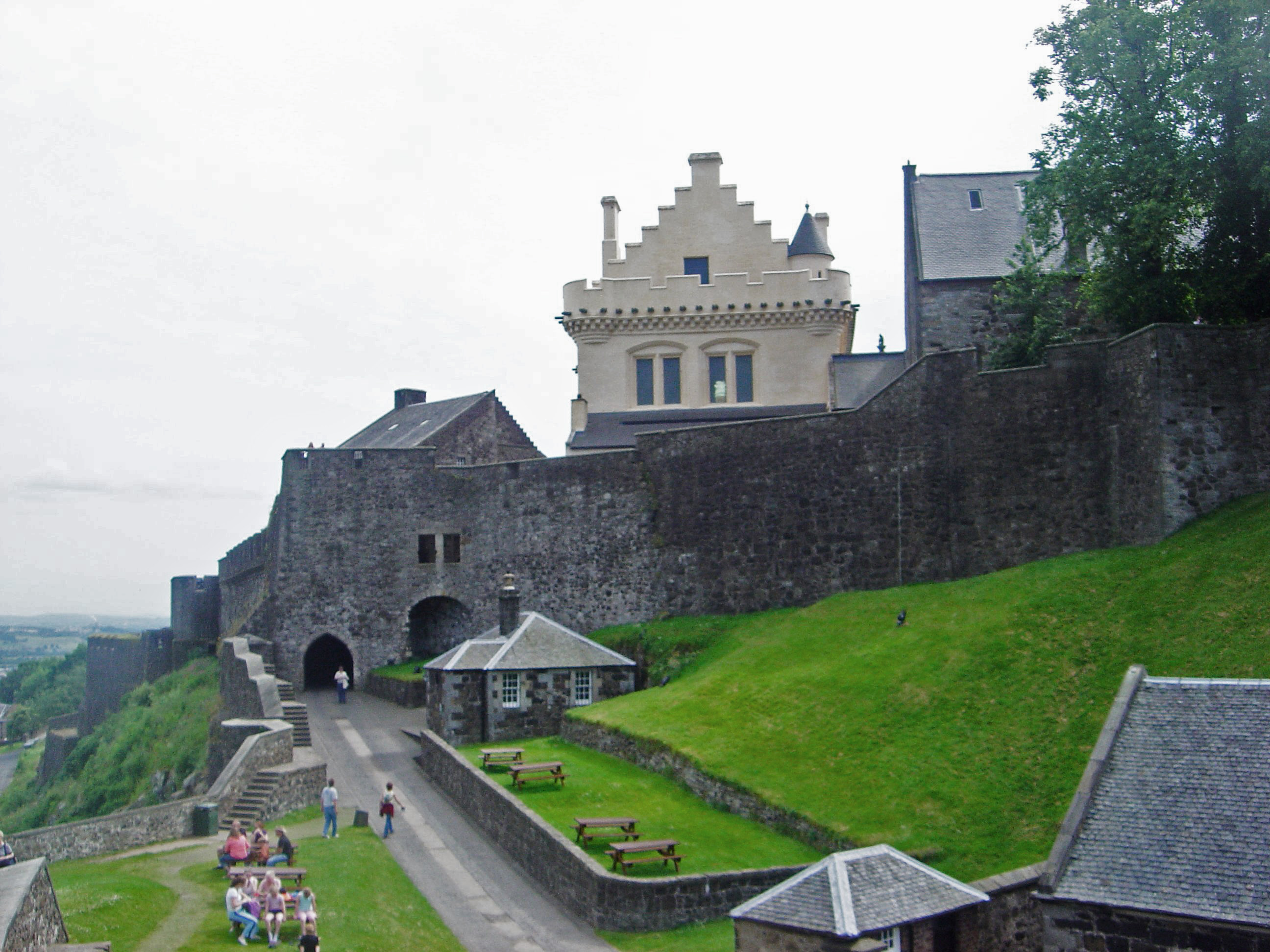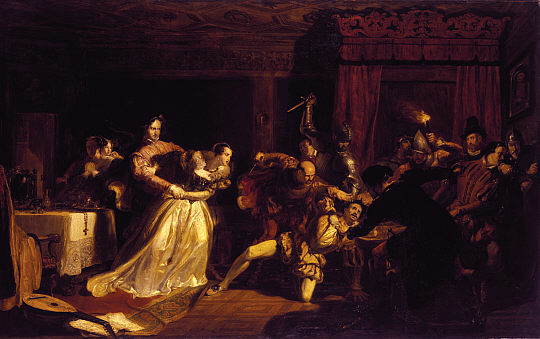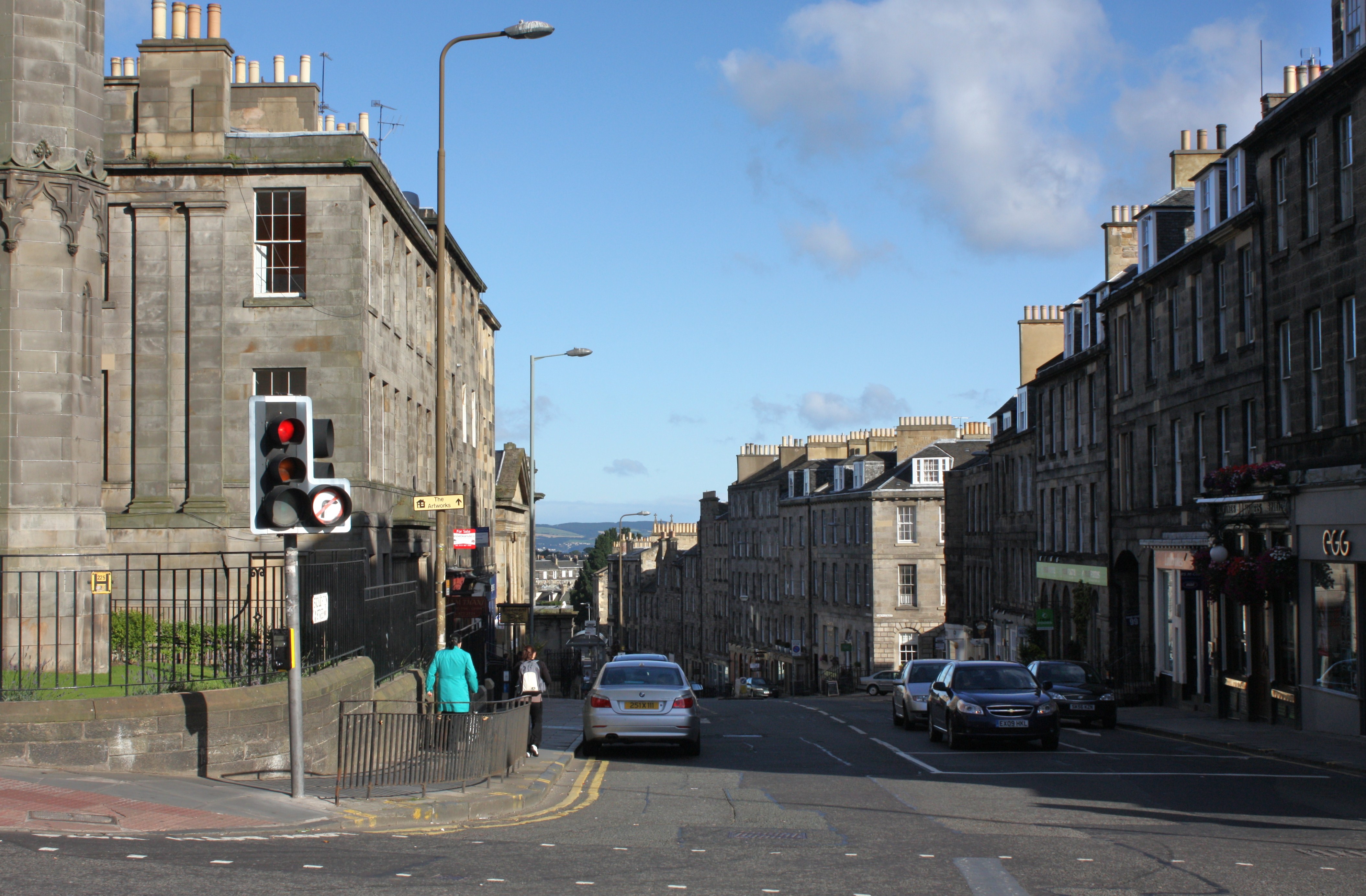|
The Canongate
The Canongate is a street and associated district in central Edinburgh, the capital city of Scotland. The street forms the main eastern length of the Royal Mile while the district is the main eastern section of Edinburgh's Old Town. David I of Scotland, by the Great Charter of Holyrood Abbey , authorised the Abbey to found a burgh separate from Edinburgh between the Abbey and the city. The burgh of Canongate which developed was controlled by the Abbey until the Scottish Reformation, when it came under secular control. In 1636 the adjacent city of Edinburgh bought the feudal superiority of the Canongate but it remained a semi-autonomous burgh under its own administration of bailies chosen by Edinburgh magistrates, until its formal incorporation into the city in 1856. The burgh gained its name from the route that the canons of Holyrood Abbey took to Edinburgh—the canons' way or the canons' gait, from the Scots word ''gait'' meaning "way". In more modern times, the eastern ... [...More Info...] [...Related Items...] OR: [Wikipedia] [Google] [Baidu] |
Canongate Tolbooth
Canongate Tolbooth is a historic landmark of the Old Town, Edinburgh, Old Town area of Edinburgh, built in 1591 as a tolbooth, that is, the centre of administration and justice of the then separate burgh of the Canongate which was outside the Edinburgh town walls. It ceased to be a municipal building in 1856 and it is now occupied by The People's Story Museum and is protected as a listed building#Scotland, category A listed building. History The tower of the tolbooth was built in 1591, and the block to the east of it at that time or slightly after, by Sir Lewis Bellenden, baron of Broughton, Edinburgh, Broughton and feudal superior of the burgh of Canongate and Lord Justice Clerk of Scotland. It served as the courthouse, burgh jail and meeting place of the town council. Many Covenanters were held in the tolbooth in poor conditions in the 17th century and a riot took place in the building in May 1692. It ceased to be the meeting place of the burgh council when Canongate was anne ... [...More Info...] [...Related Items...] OR: [Wikipedia] [Google] [Baidu] |
Palisade
A palisade, sometimes called a stakewall or a paling, is typically a row of closely placed, high vertical standing tree trunks or wooden or iron stakes used as a fence for enclosure or as a defensive wall. Palisades can form a stockade. Etymology ''Palisade'' derives from ''pale'', from the Latin word ', meaning stake, specifically when used side by side to create a wood defensive wall. In turn, ''pālus'' derives from the Old Italic word ''palūts'', which may possibly derive from the Proto-Indo-European word ''pelh'', meaning pale or gray. It may be related to the Proto-Uralic word ''pil'me'' (uncertain meaning) or the word ''pilwe'', meaning cloud. (see wikt:pale#Etymology_2, 'pale', English: Etymology 2 on Wiktionary). Typical construction Typical construction consisted of small or mid-sized tree trunks aligned vertically, with as little free space in between as possible. The trunks were sharpened or pointed at the top, and were driven into the ground and sometimes rein ... [...More Info...] [...Related Items...] OR: [Wikipedia] [Google] [Baidu] |
James V Of Scotland
James V (10 April 1512 – 14 December 1542) was List of Scottish monarchs, King of Scotland from 9 September 1513 until his death in 1542. He was crowned on 21 September 1513 at the age of seventeen months. James was the son of King James IV and Margaret Tudor, daughter of Henry VII of England. During his childhood Kingdom of Scotland, Scotland was governed by regents, firstly by his mother until she remarried, and then by his first cousin once removed, John Stewart, Duke of Albany. James's personal rule began in 1528 when he finally escaped the custody of his stepfather, Archibald Douglas, 6th Earl of Angus. His first action was to exile Angus and confiscate the lands of the Clan Douglas, Douglases. James greatly increased his income by tightening control over royal estates and from the profits of justice, customs and feudal rights. He founded the College of Justice in 1532 and also acted to end lawlessness and rebellion in the Anglo-Scottish border, Borders and the Hebrides. ... [...More Info...] [...Related Items...] OR: [Wikipedia] [Google] [Baidu] |
James IV Of Scotland
James IV (17 March 1473 – 9 September 1513) was List of Scottish monarchs, King of Scotland from 11 June 1488 until his death at the Battle of Flodden in 1513. He inherited the throne at the age of fifteen on the death of his father, James III of Scotland, James III, at the Battle of Sauchieburn, following a rebellion in which the younger James was the figurehead of the rebels. James IV is generally regarded as the most successful of the House of Stuart, Stewart monarchs of Scotland. He was responsible for a major expansion of the Royal Scots Navy, Scottish royal navy, which included the founding of two royal dockyards and the acquisition or construction of 38 ships, including the ''Great Michael'', the largest warship of its time. James was a patron of the arts and took an active interest in the law, literature and science. With his patronage the Chepman and Myllar Press, printing press came to Kingdom of Scotland, Scotland, the University of Aberdeen and the Royal College o ... [...More Info...] [...Related Items...] OR: [Wikipedia] [Google] [Baidu] |
Holyrood Palace
The Palace of Holyroodhouse ( or ), commonly known as Holyrood Palace, is the official residence of the British monarch in Scotland. Located at the bottom of the Royal Mile in Edinburgh, at the opposite end to Edinburgh Castle, Holyrood has served as the principal royal residence in Scotland since the 16th century, and is a setting for state occasions and official entertaining. The palace adjoins Holyrood Abbey, and the gardens are set within Holyrood Park. The King's Gallery, Edinburgh, King's Gallery was converted from existing buildings at the western entrance to the palace and was opened in 2002 to exhibit works of art from the Royal Collection. Charles III, King Charles III spends one week in residence at Holyrood at the beginning of summer, where he carries out a range of official engagements and ceremonies. The 16th-century historic apartments of Mary, Queen of Scots, and the State Apartments, used for official and state entertaining, are open to the public throughout ... [...More Info...] [...Related Items...] OR: [Wikipedia] [Google] [Baidu] |
Leith
Leith (; ) is a port area in the north of Edinburgh, Scotland, founded at the mouth of the Water of Leith and is home to the Port of Leith. The earliest surviving historical references are in the royal charter authorising the construction of Holyrood Abbey in 1128 in which it is termed ''Inverlet'' (Inverleith). After centuries of control by Edinburgh, Leith was made a separate burgh in 1833 only to be merged into Edinburgh in 1920. Leith is located on the southern coast of the Firth of Forth and lies within the City of Edinburgh council area; since 2007 Leith (Edinburgh ward), it has formed one of 17 multi-member Wards of the United Kingdom, wards of the city. History As the major port serving Edinburgh, Leith has seen many significant events in Scottish history. First settlement The earliest evidence of settlement in Leith comes from several archaeological digs undertaken in The Shore, Leith, The Shore area in the late 20th century. Amongst the finds were medieval wharf ... [...More Info...] [...Related Items...] OR: [Wikipedia] [Google] [Baidu] |
The Pleasance (street)
The Pleasance is a street just outside the Old Town of Edinburgh, Scotland, located in the Southside, a remnant of the Flodden Wall flanking the west side of the street between Drummond Street and the Cowgate. Historically, the street was one of the main routes into Edinburgh from the south, meeting St Mary's Wynd (now St Mary's Street) at St Mary's Wynd Port, one of the gateways of the town walls. The name derives from the Scots ''plesance'', meaning a park or garden. It first appears in 1507 as the name of a nearby house, and was later transferred to the street and then the suburb which was part of the regality of the Canongate. The derivation of the name from a nunnery of St Mary of Placentia, often mentioned in histories of Edinburgh, is an invention by William Maitland in his 1753 ''History of Edinburgh''. The street is largely residential - mainly 19th century tenements and 20th century flats - although the University of Edinburgh owns property in the area, including ... [...More Info...] [...Related Items...] OR: [Wikipedia] [Google] [Baidu] |
Broughton, Edinburgh
Broughton () is an area of Edinburgh, Scotland. Broughton was an ancient feudal barony that existed outside of Edinburgh before it was later incorporated into the city as urban development took place in the 18th and 19th centuries. The area is mostly residential in nature but includes the former Broughton market. Today there are numerous small businesses as well as several listed church buildings, a gallery and some organisations, including the Edinburgh Museums collection centre and the Scottish Historic Buildings Trust (the Glasite meeting house). Ancient barony The feudal barony of Broughton in the 16th and 17th centuries was in the hands of the Bellenden family, who had made their money in the legal profession. John Bellenden (Lord Justice Clerk), Sir John Bellenden of Broughton, Knt., (d. 1 October 1576) who was present at the Coronation of King James VI and I, James VI in 1567, possessed the barony of Broughton, with the additional superiorities of the Canongate and Nor ... [...More Info...] [...Related Items...] OR: [Wikipedia] [Google] [Baidu] |
Burgh Of Regality
A burgh of regality is a type of Scottish town. They were distinct from royal burghs as they were granted to "lords of regality", leading noblemen. (In distinction, burghs of barony were granted to a tenant-in-chief, a landowner who held his estates directly from the crown, and had fewer civil and criminal law powers). They were created between 1450 and 1707, and conferred upon the landowner varying trading rights, such as the right to hold weekly markets or to trade overseas. Burghs of regality possessed higher jurisdictional rights ''in liberam regalitatem'', amounting to complete criminal jurisdiction except for treason. These rights were abolished by the Heritable Jurisdictions (Scotland) Act 1746, after which the burghs enjoyed only the jurisdictional rights of burghs of barony. See also * Burgh, borough, and ancient borough * List of burghs in Scotland * Kilwinning Abbey * Lords of Regality In the Baronage of Scotland, a Lord of Regality is an ancient noble title. Lor ... [...More Info...] [...Related Items...] OR: [Wikipedia] [Google] [Baidu] |
Regality
A burgh of regality is a type of Scottish town. They were distinct from royal burghs as they were granted to "Lords of Regality, lords of regality", leading noblemen. (In distinction, burgh of barony, burghs of barony were granted to a tenant-in-chief, a landowner who held his estates directly from the crown, and had fewer civil and criminal law powers). They were created between 1450 and 1707, and conferred upon the landowner varying trading rights, such as the right to hold weekly markets or to trade overseas. Burghs of regality possessed higher jurisdictional rights ''in liberam regalitatem'', amounting to complete criminal jurisdiction except for treason. These rights were abolished by the Heritable Jurisdictions (Scotland) Act 1746, after which the burghs enjoyed only the jurisdictional rights of burghs of barony. See also * Burgh, borough, and ancient borough * List of burghs in Scotland * Kilwinning Abbey * Lords of Regality Notes References * * Government of ... [...More Info...] [...Related Items...] OR: [Wikipedia] [Google] [Baidu] |
Edinburgh Castle
Edinburgh Castle is a historic castle in Edinburgh, Scotland. It stands on Castle Rock (Edinburgh), Castle Rock, which has been occupied by humans since at least the Iron Age. There has been a royal castle on the rock since the reign of Malcolm III of Scotland, Malcolm III in the 11th century, and the castle continued to be a royal residence until 1633. From the 15th century, the castle's residential role declined, and by the 17th century it was principally used as a military garrison. Its importance as a part of Scotland's national heritage was recognised increasingly from the early 19th century onwards, and various restoration programmes have been carried out over the past century and a half. Edinburgh Castle has played a prominent role in History of Scotland, Scottish history, and has served variously as a Palace, royal residence, an arsenal, a treasury, a national archives, national archive, a Mints of Scotland, mint, a prison, a military fortress, and the home of the Honou ... [...More Info...] [...Related Items...] OR: [Wikipedia] [Google] [Baidu] |








